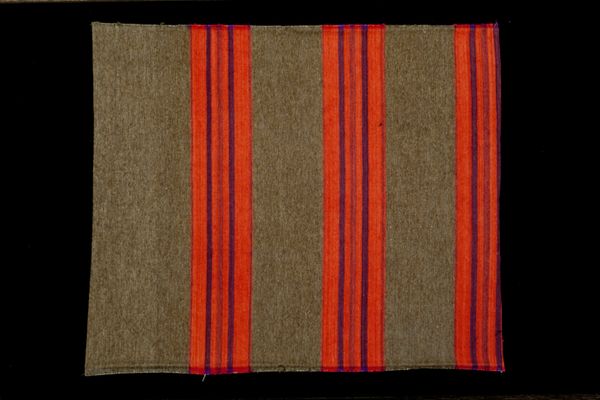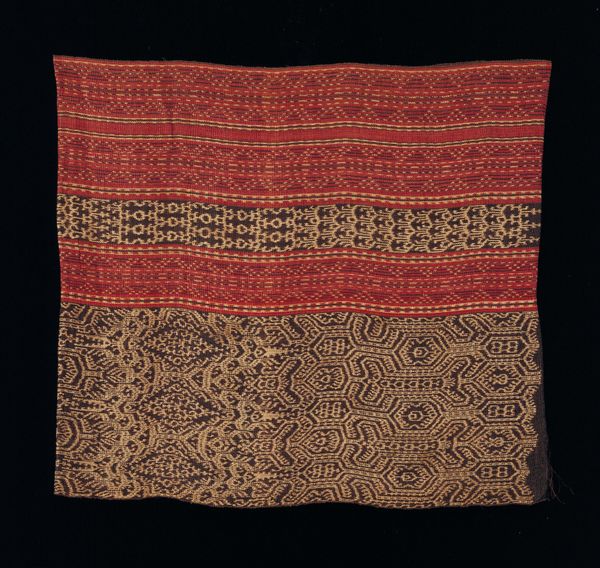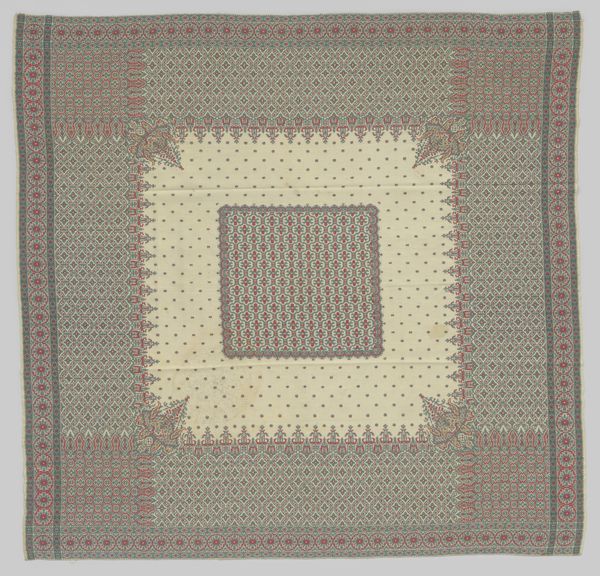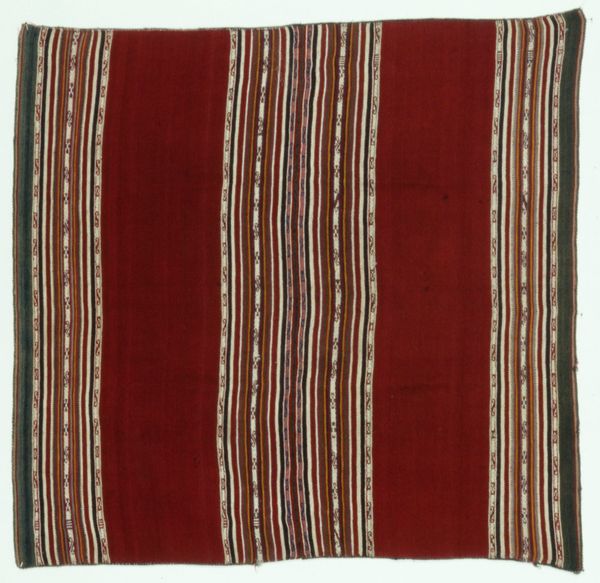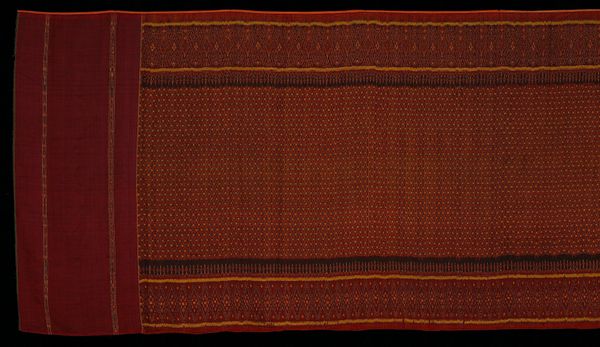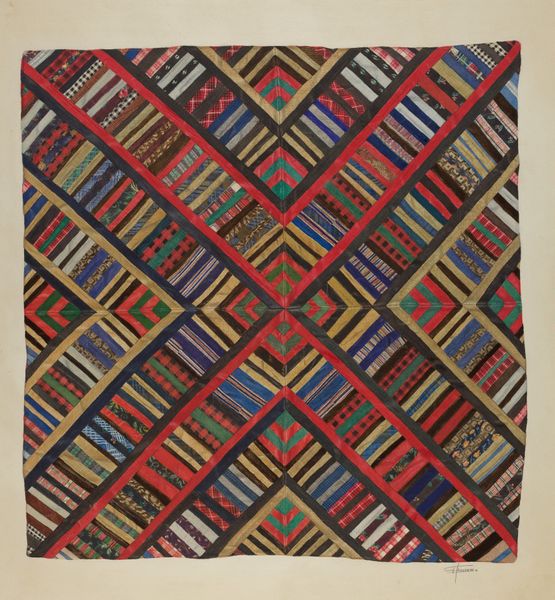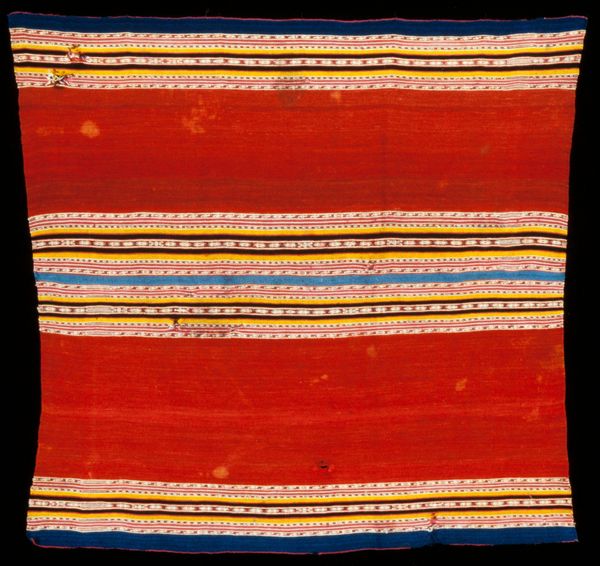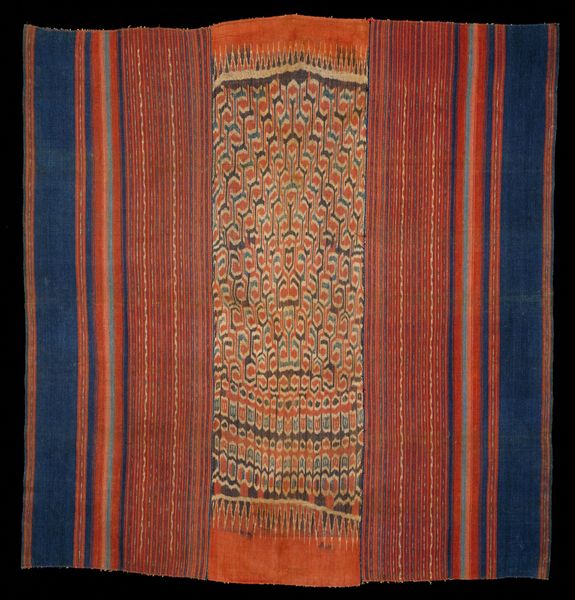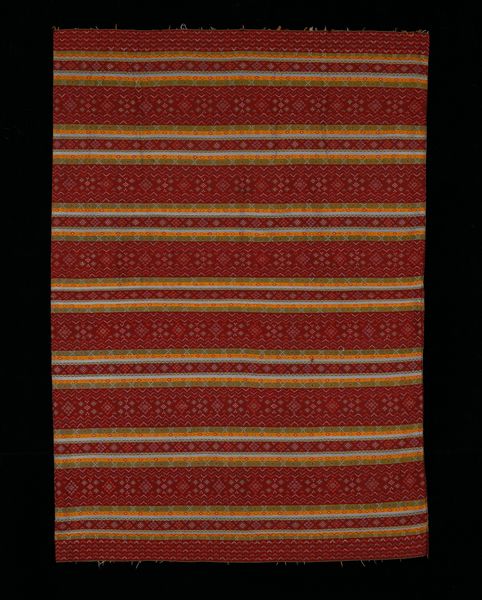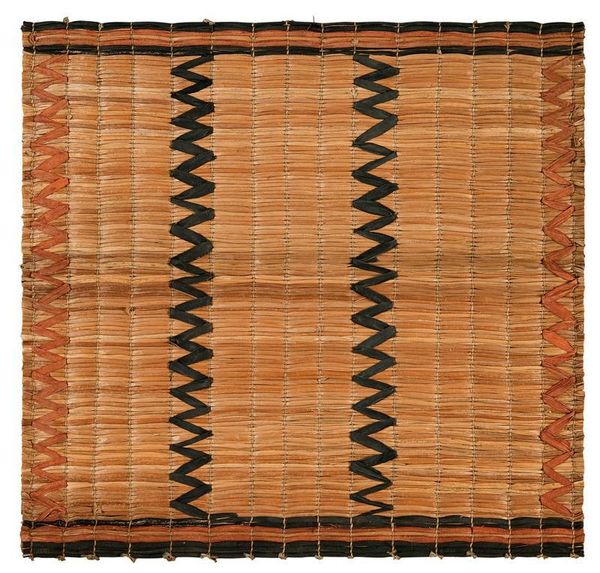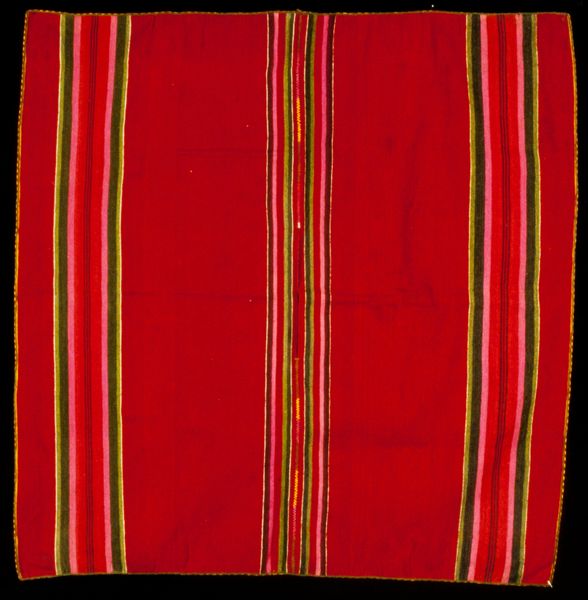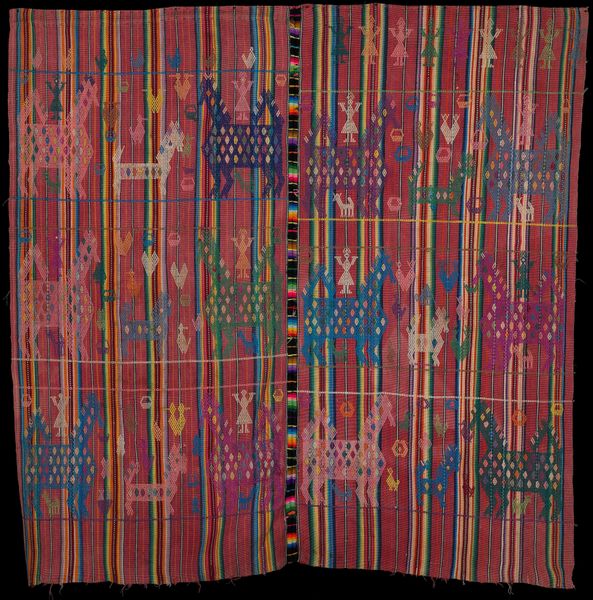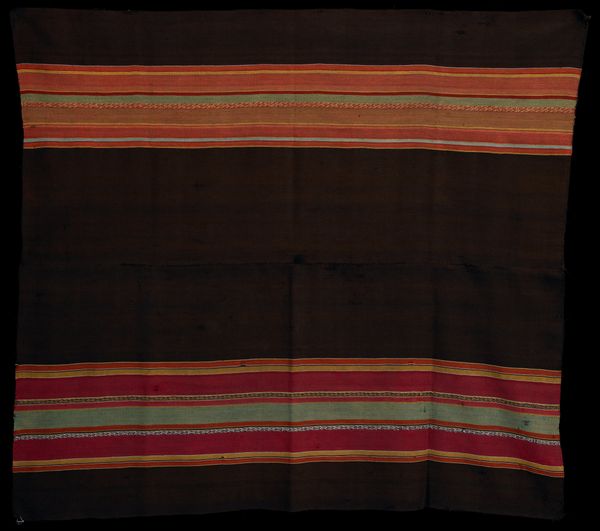
silk, weaving, textile, cotton
#
silk
#
weaving
#
textile
#
abstraction
#
line
#
cotton
Dimensions: 51 x 51 1/2 in. (129.54 x 130.81 cm)
Copyright: Public Domain
Curator: Looking at this textile work, whose creation is dated around 1900, simply titled "Hanging" by an anonymous creator, my first impression is how quiet it is. The colors, the repetition, it's soothing. Editor: Yes, its calmness might be deceptive, given the possible historical context. What appear to be just cotton and silk stripes, with those subdued greens and reds bordering a central panel of pinkish-brown stripes, are actually a testament to complex labor systems. Who was weaving this? Under what conditions? The textile almost certainly intersects with histories of global trade and textile production. Curator: The labor and origin questions are valid. Let’s analyze the structure more. It features thin stripes that shimmer as if they're metallic threads. Do we know if metal threads were incorporated in such hangings? Or perhaps that effect was achieved using a particular silk or cotton. The intersections themselves, the joins, could reveal information on different makers and separate stages of labor. Editor: Agreed, examining the hand of the maker or makers is vital. But it is essential to recall that artistic "anonymity" isn't always just that; often it indicates whose labor is valued versus whose is erased, whose is credited as art versus whose is regarded as a craft or trade. This "hanging" becomes an archive of power relations when you start thinking about production, the use of specific textiles, access to dyes. How was it intended to be used, and by whom? The piece invites further analysis. Curator: These questions concerning value and context are helpful. The quiet regularity of the lines does almost erase the sense of an individual. At first, I merely noticed a lovely exercise in visual rhythm—but to ignore the production history seems obtuse. It’s not about mere visual appeal, is it? Editor: Exactly, and the abstraction inherent in those rhythmic stripes speaks to design and artistic movements in textiles beyond purely decorative application. Understanding its position as art *and* labor is paramount. Curator: So by shifting our focus from the individual artist, in this instance rendered ‘anonymous,’ and looking at the entire production, social use and historical trajectory, this hanging yields more questions than aesthetic pleasures. Editor: Precisely. Art doesn't exist in a vacuum; rather, it presents opportunities for interrogation and nuanced understanding.
Comments
No comments
Be the first to comment and join the conversation on the ultimate creative platform.
